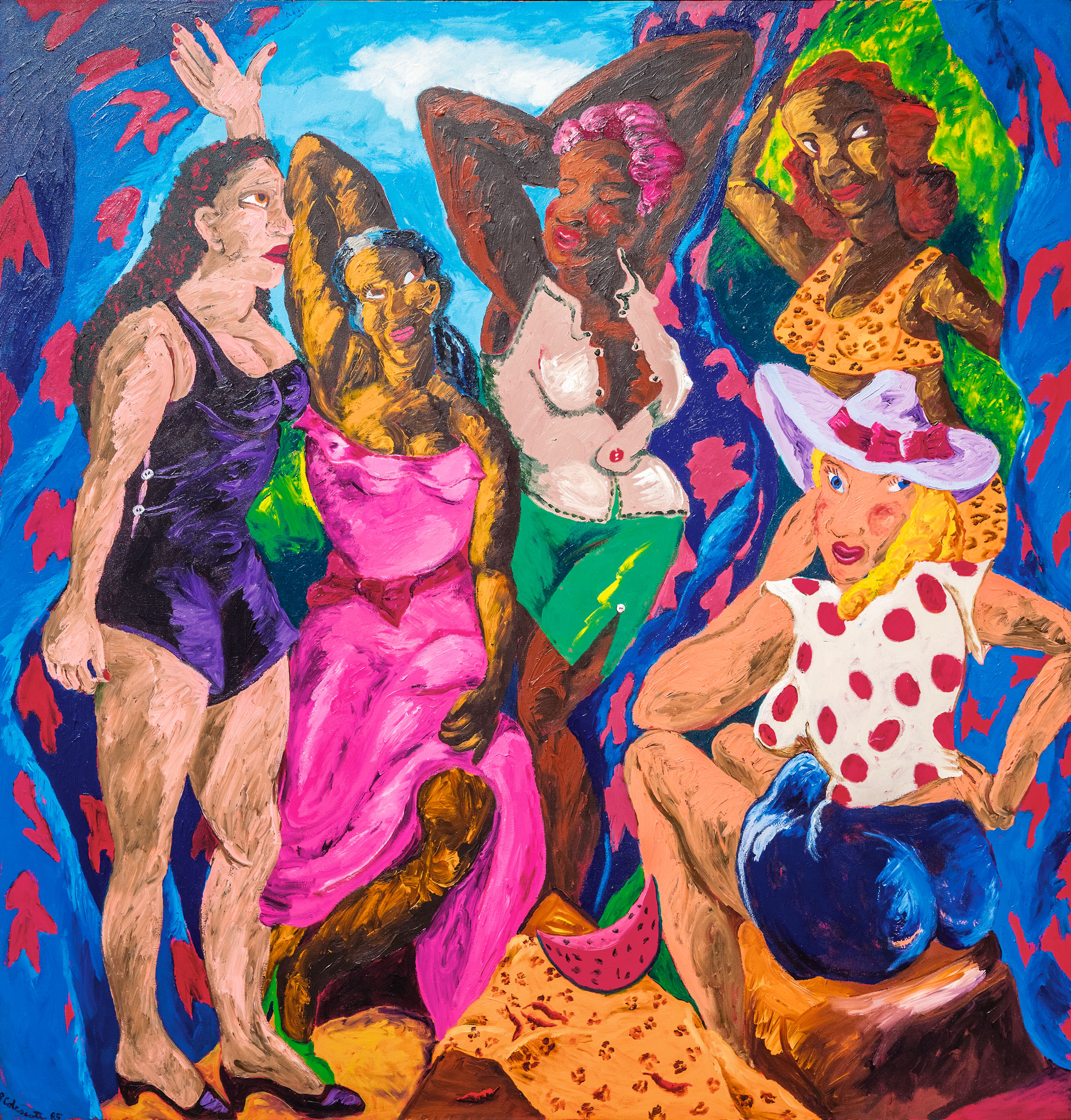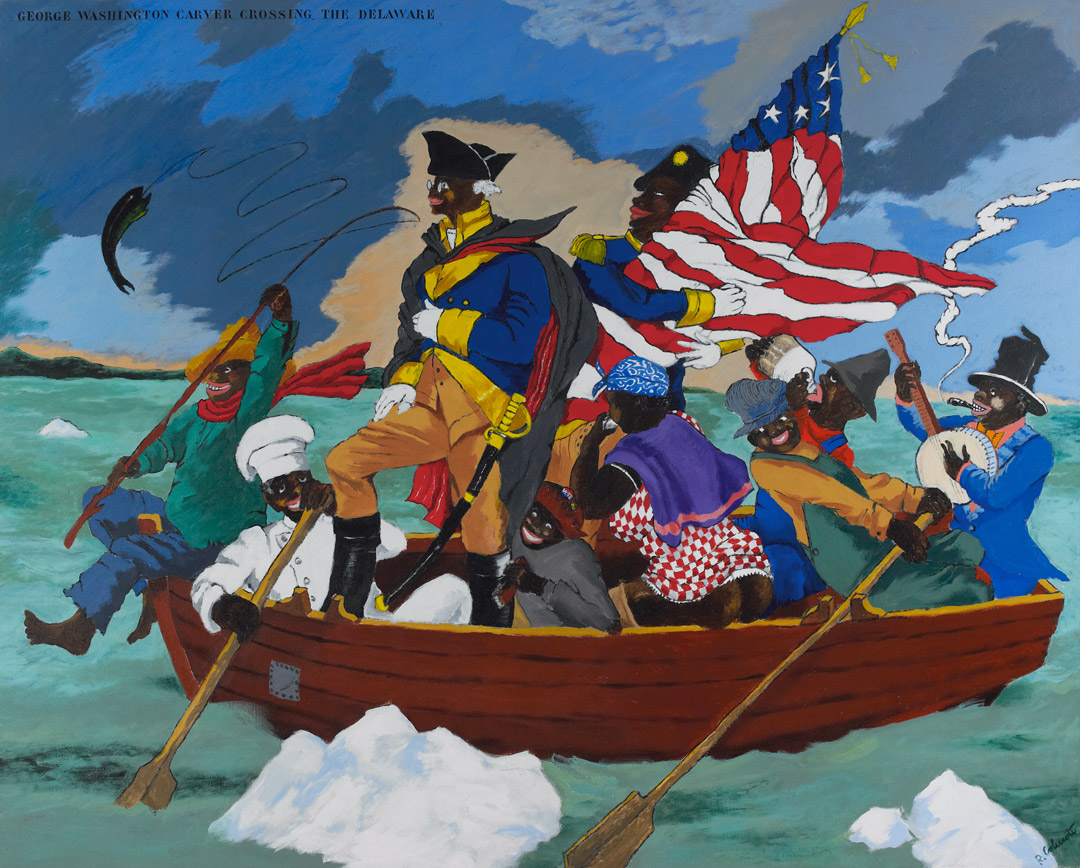Knowledge of the Past Is the Key to the Future: Some Afterthoughts on Discovery
Robert Colescott
Knowledge of the Past Is the Key to the Future is a series of paintings about the politics of representation. The title refers to Marcus Garvey: "A people without the knowledge of their past history, origin and culture is like a tree without roots." These are tightly packed compositions that ponder the history and legacy of slavery and colonialism and weave together the past and present.
"I kind of blew apart abstract painting and put it back together again. And I did a lot of different things, always knowing that - the farther I got into expressionism, the more I wanted to come back to a more structured idiom."
– Robert Colescott
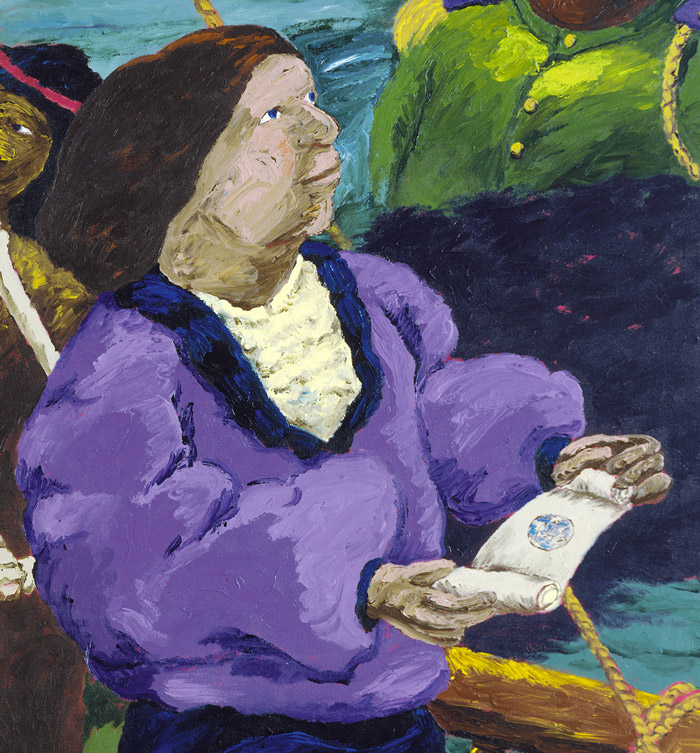
Knowledge of the Past Is the Key to the Future: Some Afterthoughts on Discovery (detail), 1986, Robert Colescott.
Christopher Columbus is looking off into the distance, consulting a map, oblivious to an important part of the outcomes of his "discovery" of America.

Knowledge of the Past Is the Key to the Future: Some Afterthoughts on Discovery (detail), 1986, Robert Colsescott.
In history painting a skeleton or skull is known as a memento mori: a reminder of the fleeting nature of life and the guarantee of death. This skeleton might represent the many lives lost to slavery as well as the staggering loss of life due to the introduction of new diseases during colonization that especially decimated Indigenous populations.
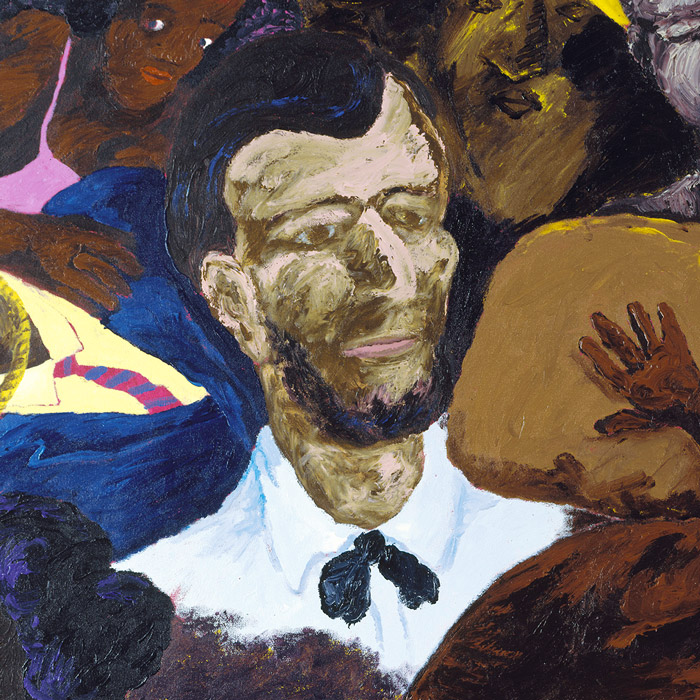
Knowledge of the Past Is the Key to the Future: Some Afterthoughts on Discovery (detail), 1986, Robert Colescott.
Abraham Lincoln is positioned between two Black figures—a man on rural ground with no shirt bearing the burden of a heavy load and a man against an urban background wearing a suit and tie with a noose around his neck. Underrepresented in historical narratives, these are two extremes of Black experiences before and after the Emancipation Proclamation.
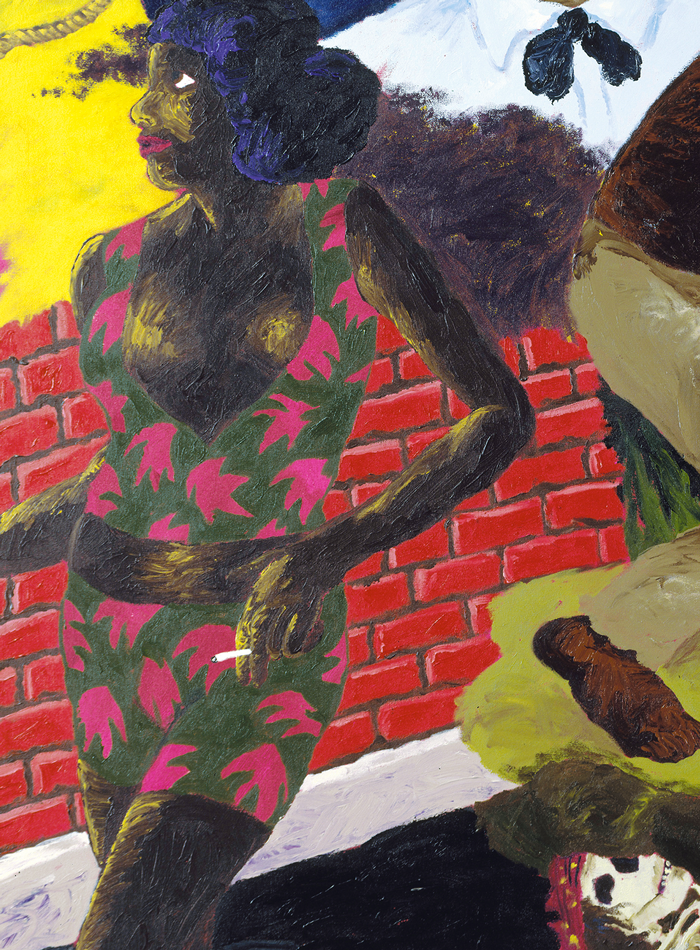
Knowledge of the Past Is the Key to the Future: Some Afterthoughts on Discovery (detail), 1986, Robert Colescott.
The decades following the First World War saw one of the largest demographic shifts in United States history as African Americans relocated from the rural South to the industrial North during The Great Migration. The barriers to integrating into urban life were high and the impact of this exodus on the aspirations and struggles of Black communities was wide reaching.
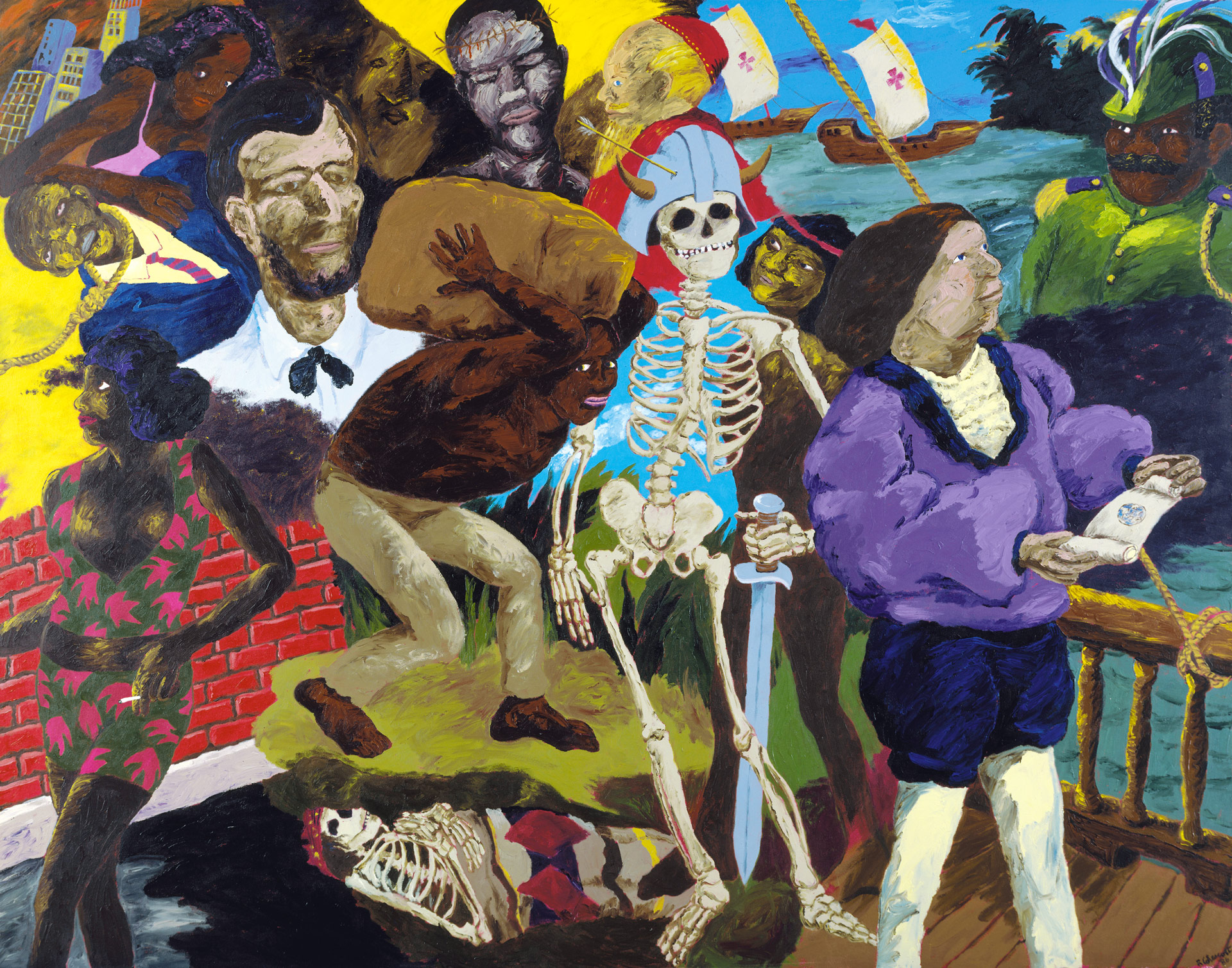
More Robert Colescott
Images: Knowledge of the Past is the Key to the Future: Some Afterthoughts on Discovery, 1986, Robert Colescott, acrylic on canvas, 90 x 114 in., The Metropolitan Museum of Art, New York, Arthur Hoppock Hearn Fund, 1987.166, © 2017 Estate of Robert Colescott / Artists Rights Society (ARS), New York / Art Resource, NY. Les Demoiselles d’Alabama: Vestidas, 1985, Robert Colescott, acrylic on canvas, 96 x 92 in., Seattle Art Museum, General Acquisition Fund, Bill and Melinda Gates Foundation Art Acquisition Fund, Margaret E. Fuller Purchase Fund, and Patricia Denny Art Acquisition Fund, 2016.12, © 2017 Estate of Robert Colescott / Artists Rights Society (ARS), New York, photo: Mark Woods. George Washington Carver Crossing the Delaware: Page from an American History Textbook, 1975, Robert Colescott, acrylic on canvas, 84 x 108 in., Private collection, Saint Louis, © 2017 Estate of Robert Colescott / Artists Rights Society (ARS), New York, photo: Jean Paul Torno.



